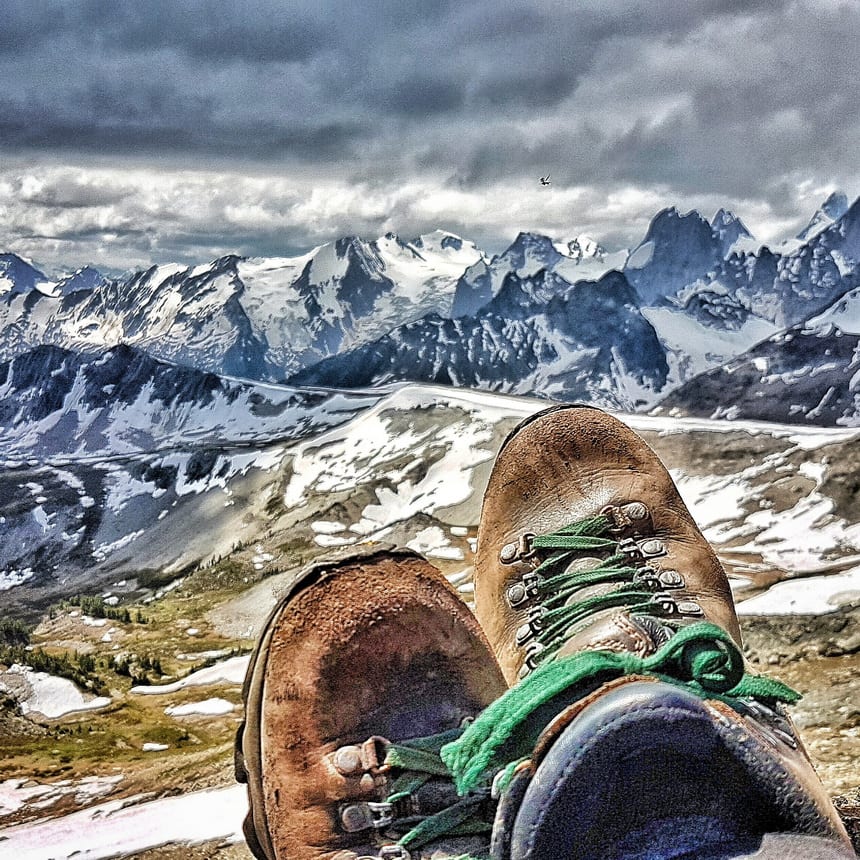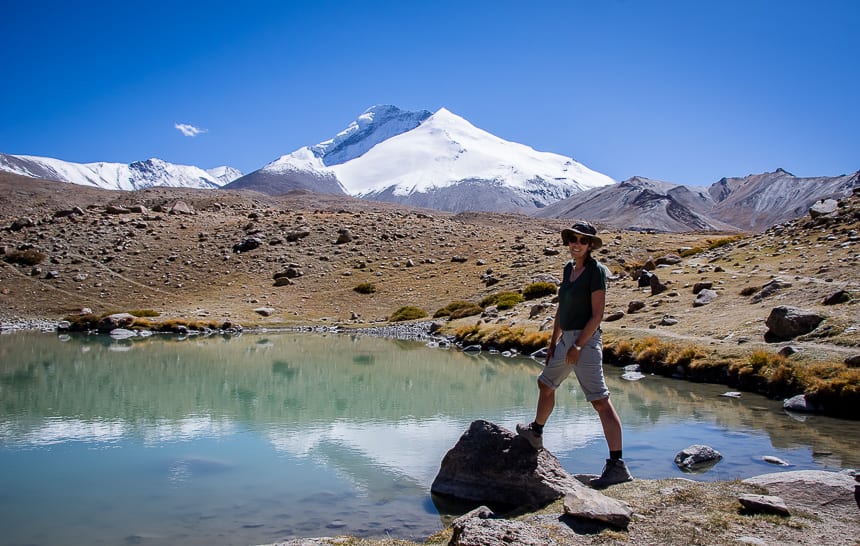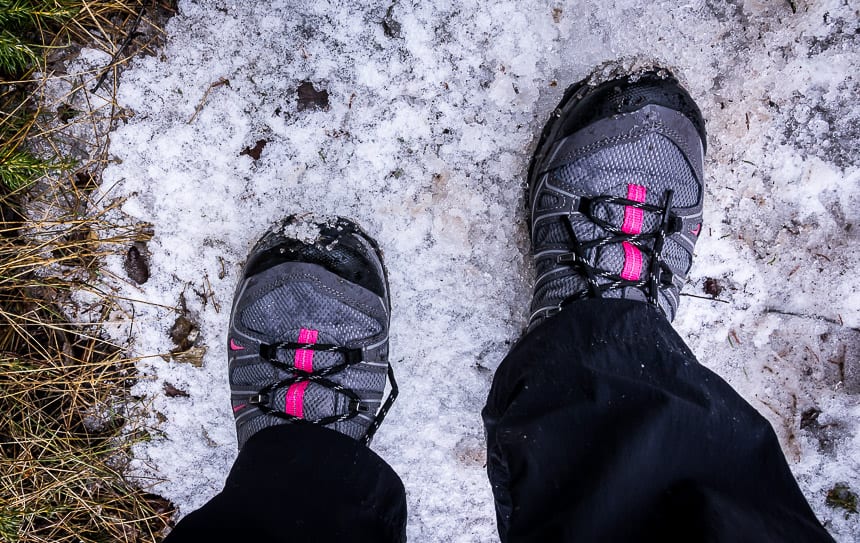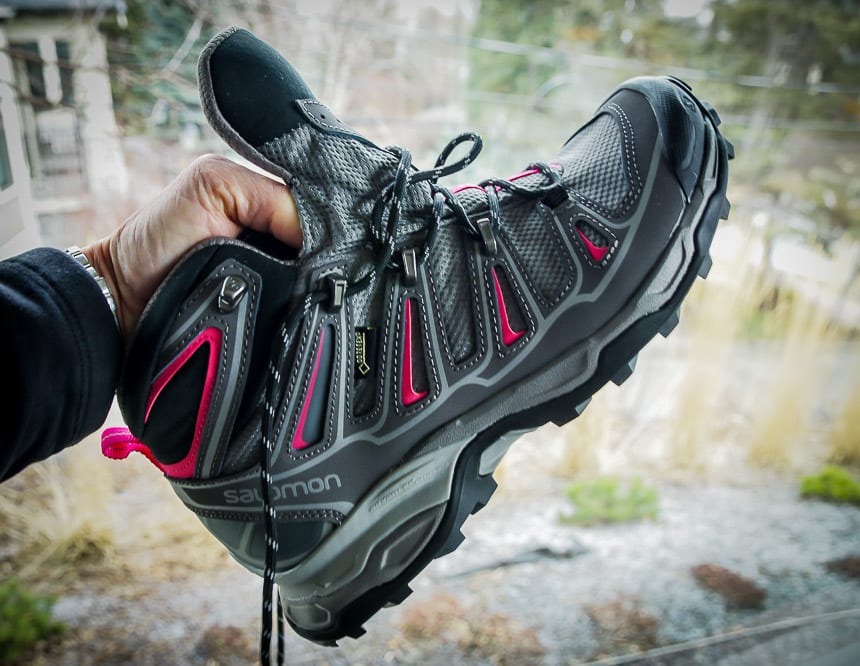With hiking season upon us it’s time to think about the state of your hiking boots. Perhaps you’re like me – in love with the comfort of your old ones and all the memories that go with them. But at a certain point – and mine are there – it’s time for a new pair. I’ve included tips here on what to look for in a new hiking boot – and importantly how to break in hiking boots.
When my boots get wet they now bubble air out along the seams. That’s not a good sign especially when you have several major hiking trips planned in the next six months including the Juan de Fuca trail on the west coast of Vancouver Island and a three week trek in Zanskar in the remote Indian Himalayas.

A few weeks ago I got a new pair of hiking boots from Sporting Life. They’re the cleanest they’ll ever be but they don’t have a soul – yet. That comes with shared time on the trails.
And they’re definitely not broken in. I never look forward to the process though on a couple of occasions my new boots were tested the next day on epic hikes and delivered. Cue the steep hike to Abbott Pass Hut. But that’s not usually the case.

Here are tips for breaking in hiking boots that are faster and less painful

This post includes some affiliate links. If you make a qualifying purchase through one of these links, I will receive a small percentage of the sale at no extra cost to you. Thank you very much for your support.
Leather or lightweight hiking boots
Before you even buy a new pair of hiking boots you’ll have to decide whether you want leather boots or lightweight waterproof boots. It’s been said that a heavy pair of leather boots is the equivalent of carrying five extra pounds on your back – so if possible I want the lightweight boots.
But sometimes, especially if you’re a backpacker who likes extreme terrain, leather boots are the only way to go.
The boots I love – and have bought a second time fromSalomon are these ones.
Getting the right boot fit before you leave the store is very important
Do not fall for a pair of boots because of a brand name or appearance. The only thing that matters is a comfortable fit. Breaking in boots shouldn’t be hard but it all starts with being honest with yourself about the fit in the store.
If you’ve had a certain brand in the past that works well, look at what they offer now. Some makes have a wider fit, others a narrower fit.
Tips for breaking in hiking boots and getting the perfect fit
Don’t leave the store if the boot isn’t comfortable. Fine tune the fit in the store. If you own orthotics, try the boots on with them. If you don’t own orthotics you can still buy insoles like those made bySuperfeet. They may be the ticket to feel-good boots without coughing up $300 – $500 for custom orthotics.
Heel lifts and pads – available at drugstores can help.
Leather boots do best when the leather has been softened. Treat the leather before you even hit the trails with a product likeNikwax Direct Spray On Protector. It’s a waterproof protector that helps rejuvenate water repellency and maintain breathability. Also consider taking a blow dryer to the boot and softening it up with heat.
If you have ongoing problems with a specific spot on the boot after a purchase get your boots punched out at a skate store.
Try shopping for hiking boots later in the day when your feet might be swollen – as they usually swell by the end of the day when you’re hiking.
How to break in hiking boots on real trails
You’ve got the new hiking boots and they’re comfortable when you walk around inside. The next step is to break in hiking boots on real trails without pain being an issue.
I don’t recommend doing it on an epic 30 kilometre hike. Start off with shorter hikes and build up the distance. Boots often cause foot discomfort on the descent – especially at the end of the day when your feet have swollen and your toes get scrunched.
Try to go easy on big descents on the first few times out if at all possible.
You’re better off customizing a pair of boots than continually buying new ones hoping to get a pair that finally work.

What I always do post hike
At the end of a hiking day I switch to a pair of lightweight sandals as soon as the terrain allows. Sometimes I have to wait till I get to the car but then it’s the first thing I do. It feels so good to get out of boots and have my feet free again.


